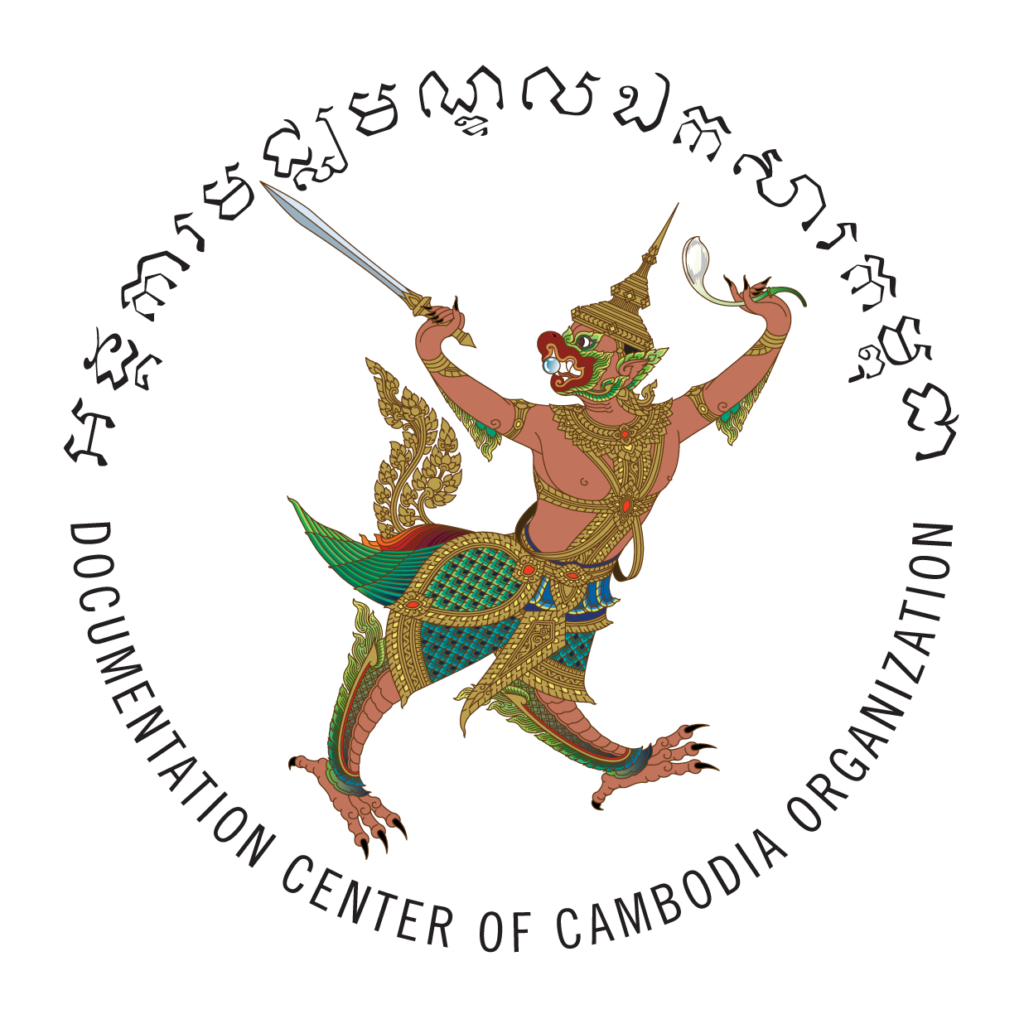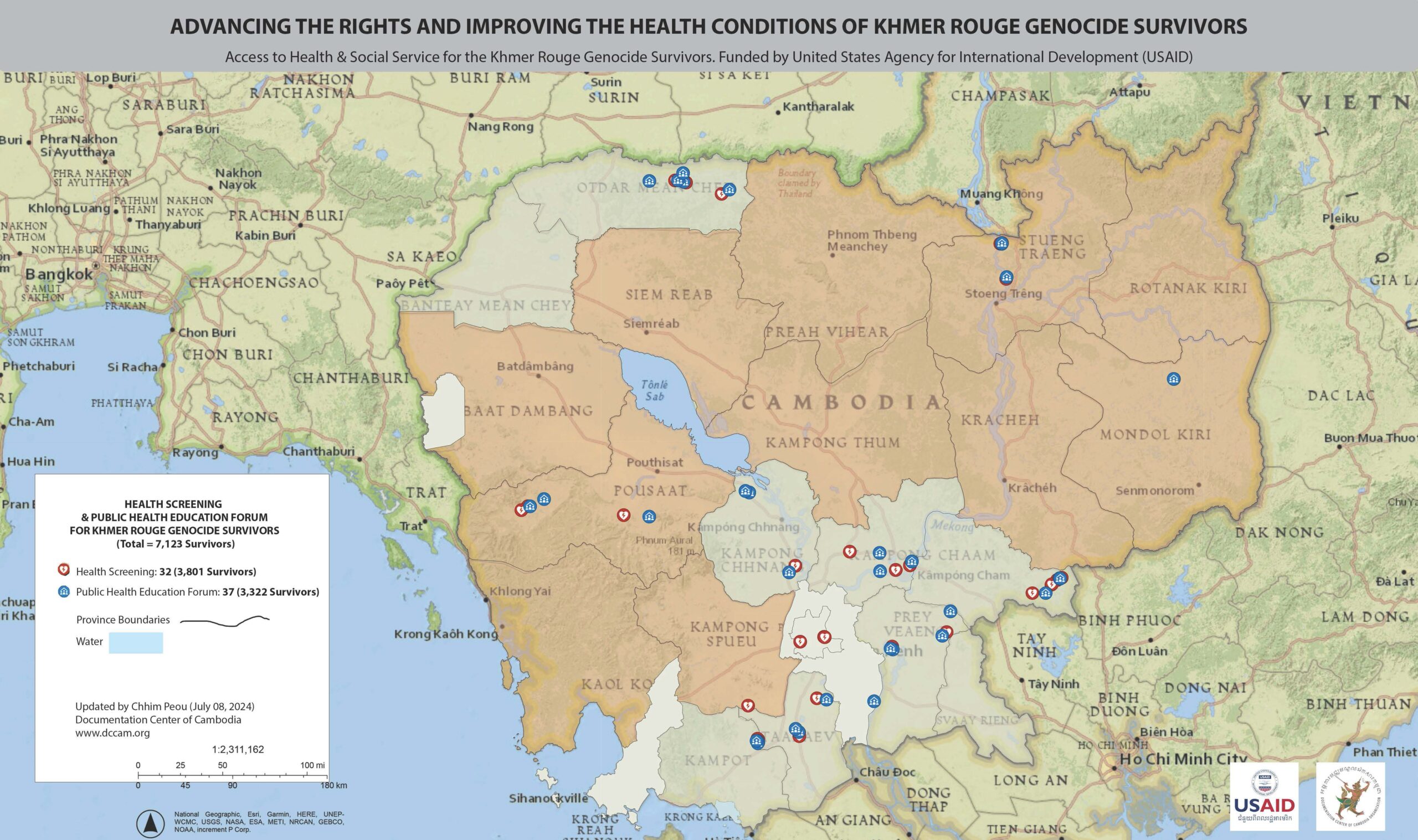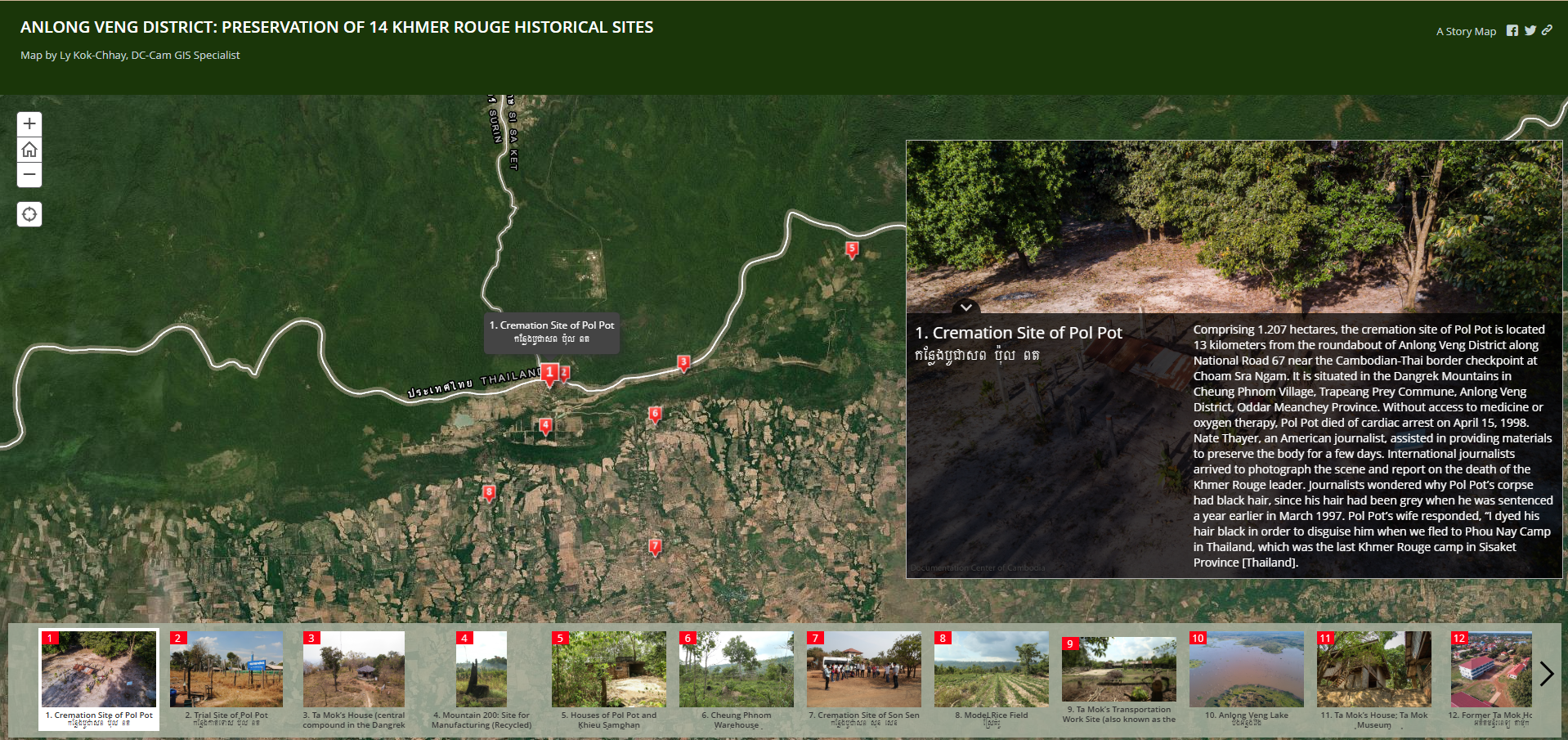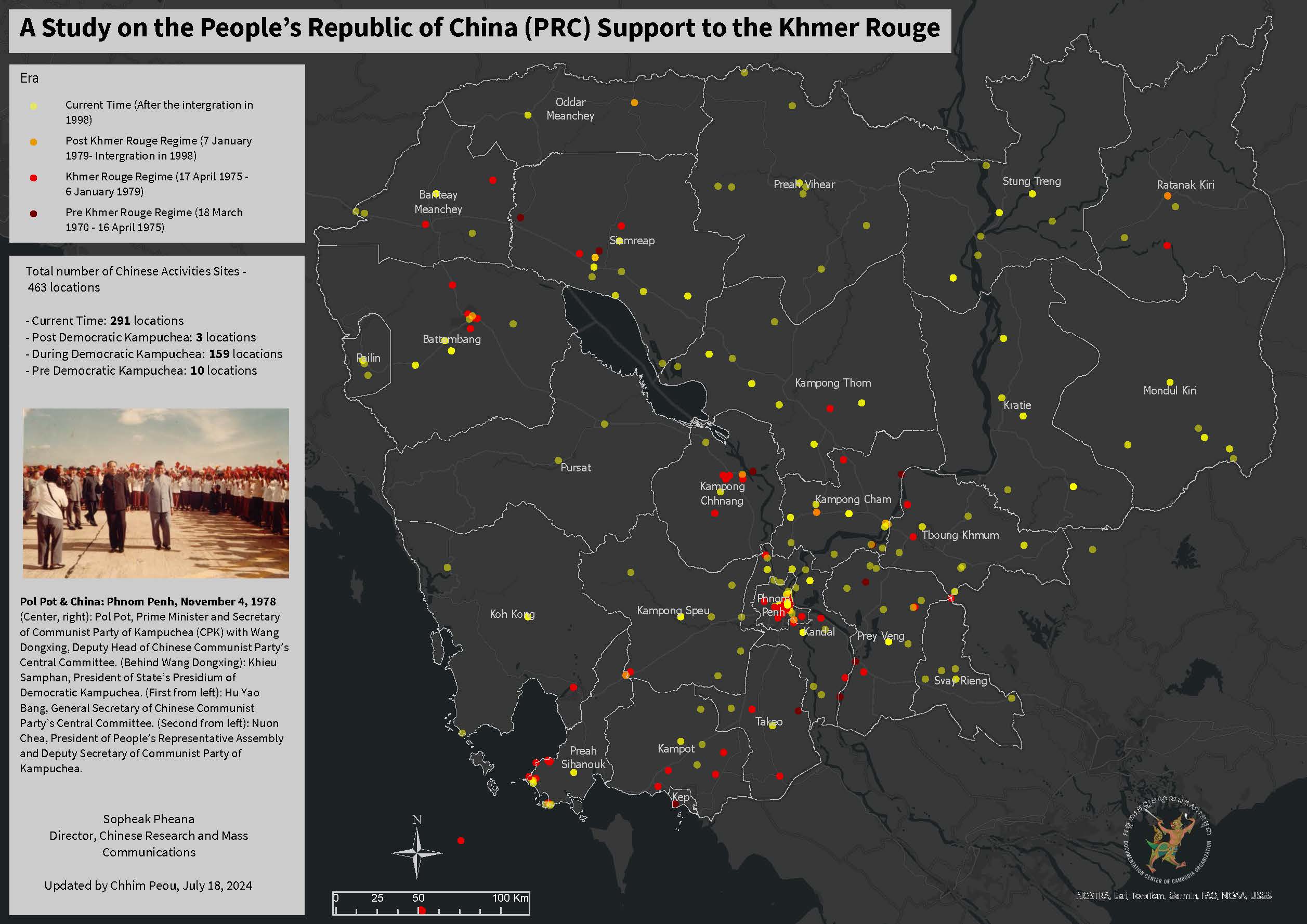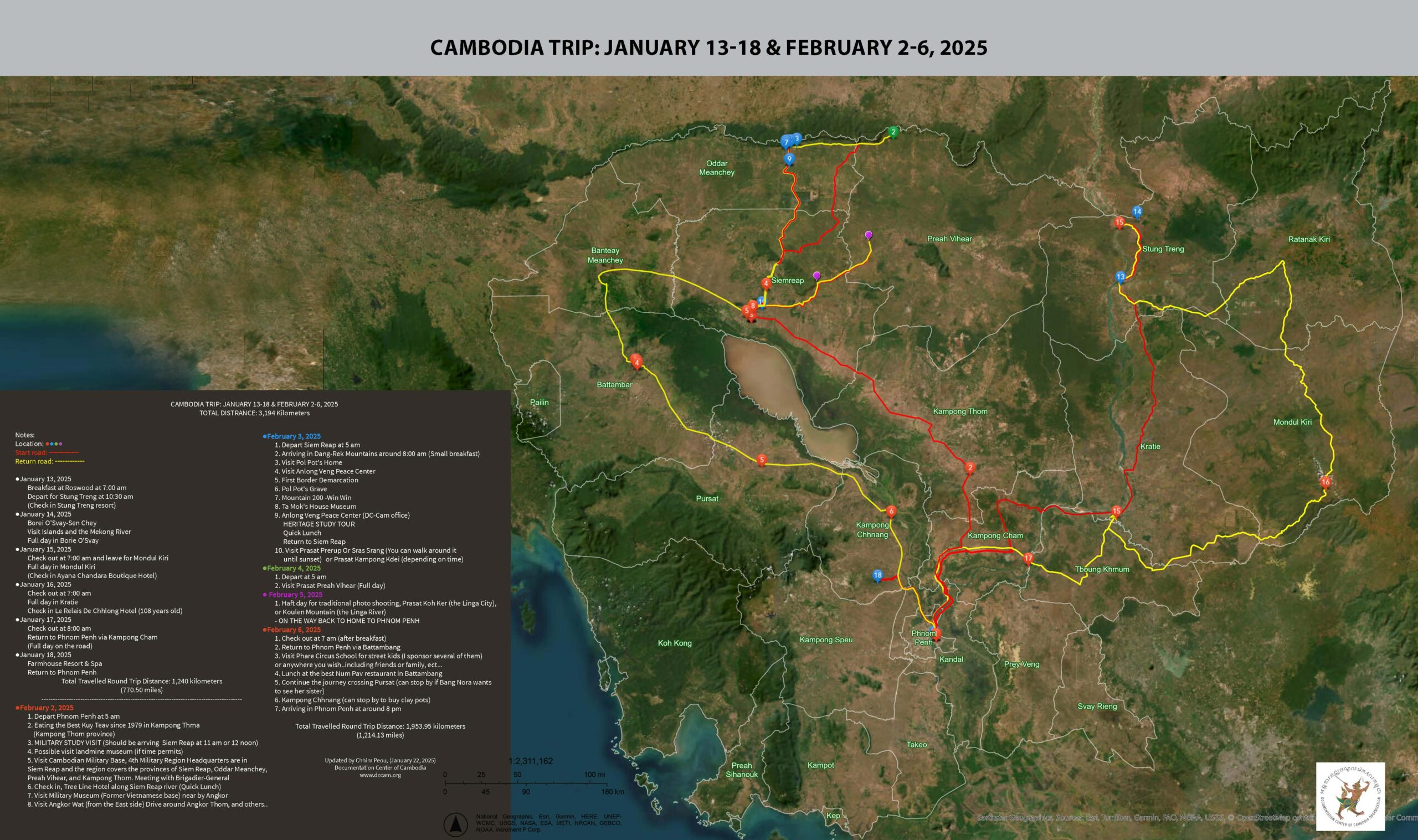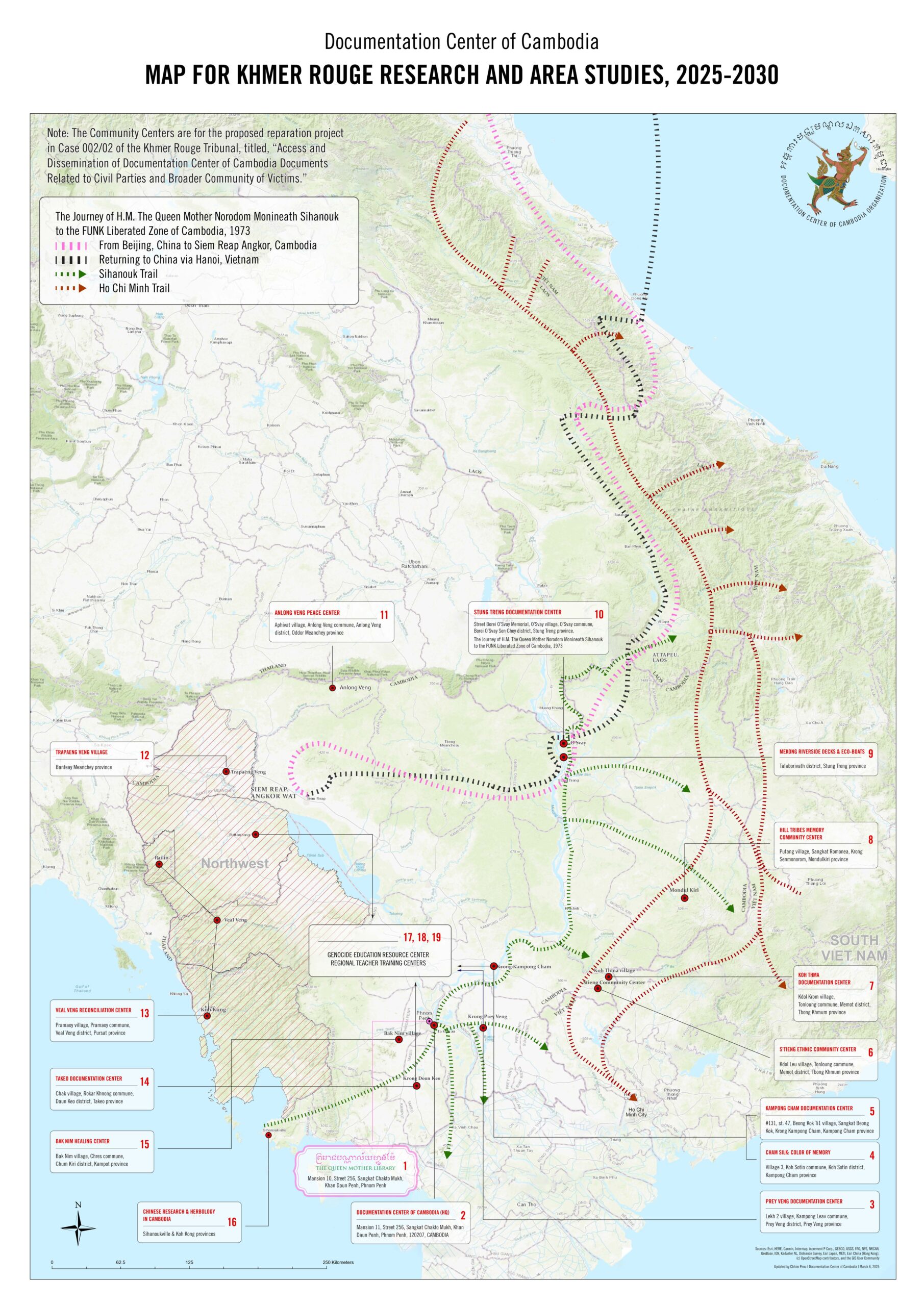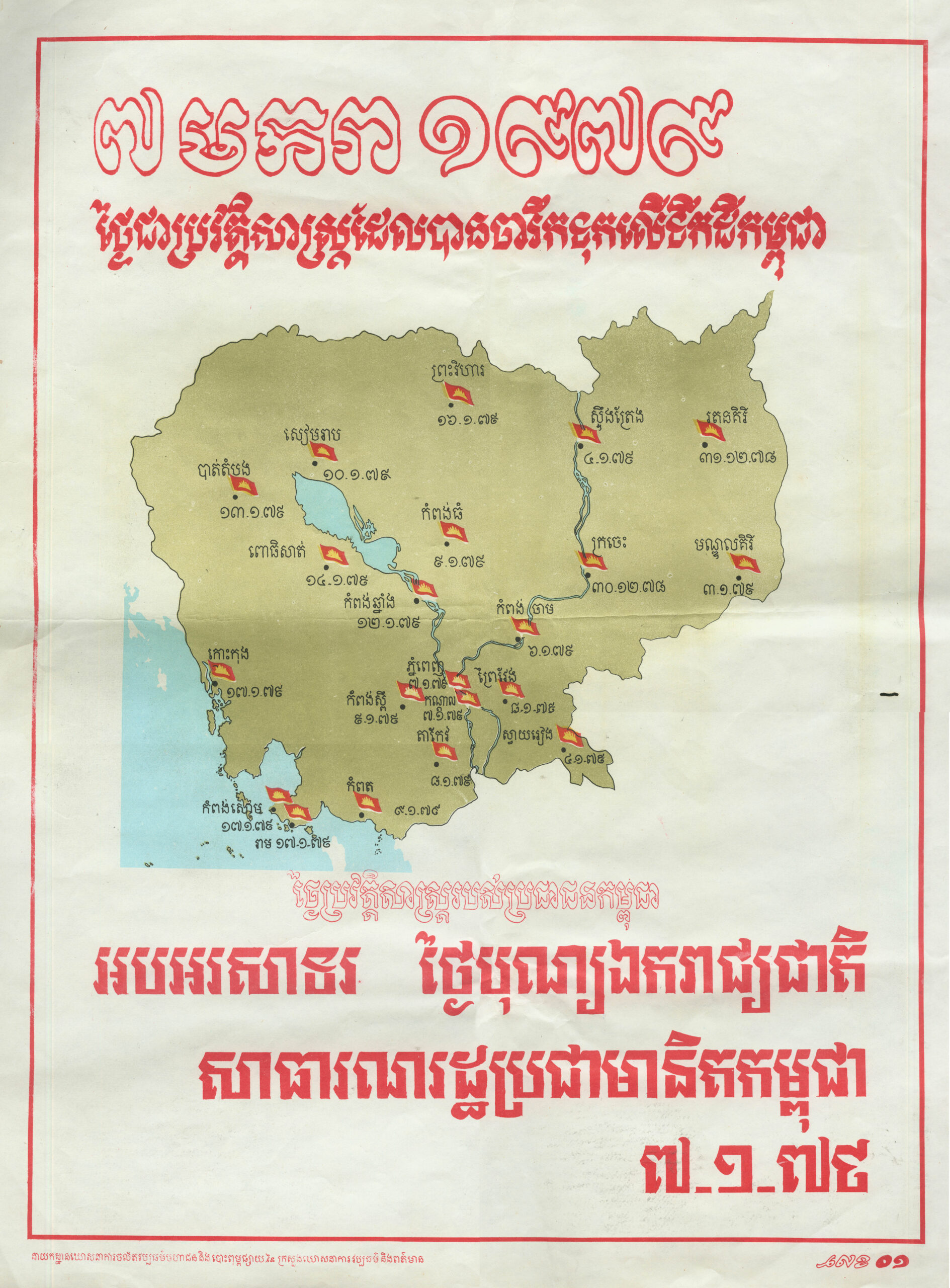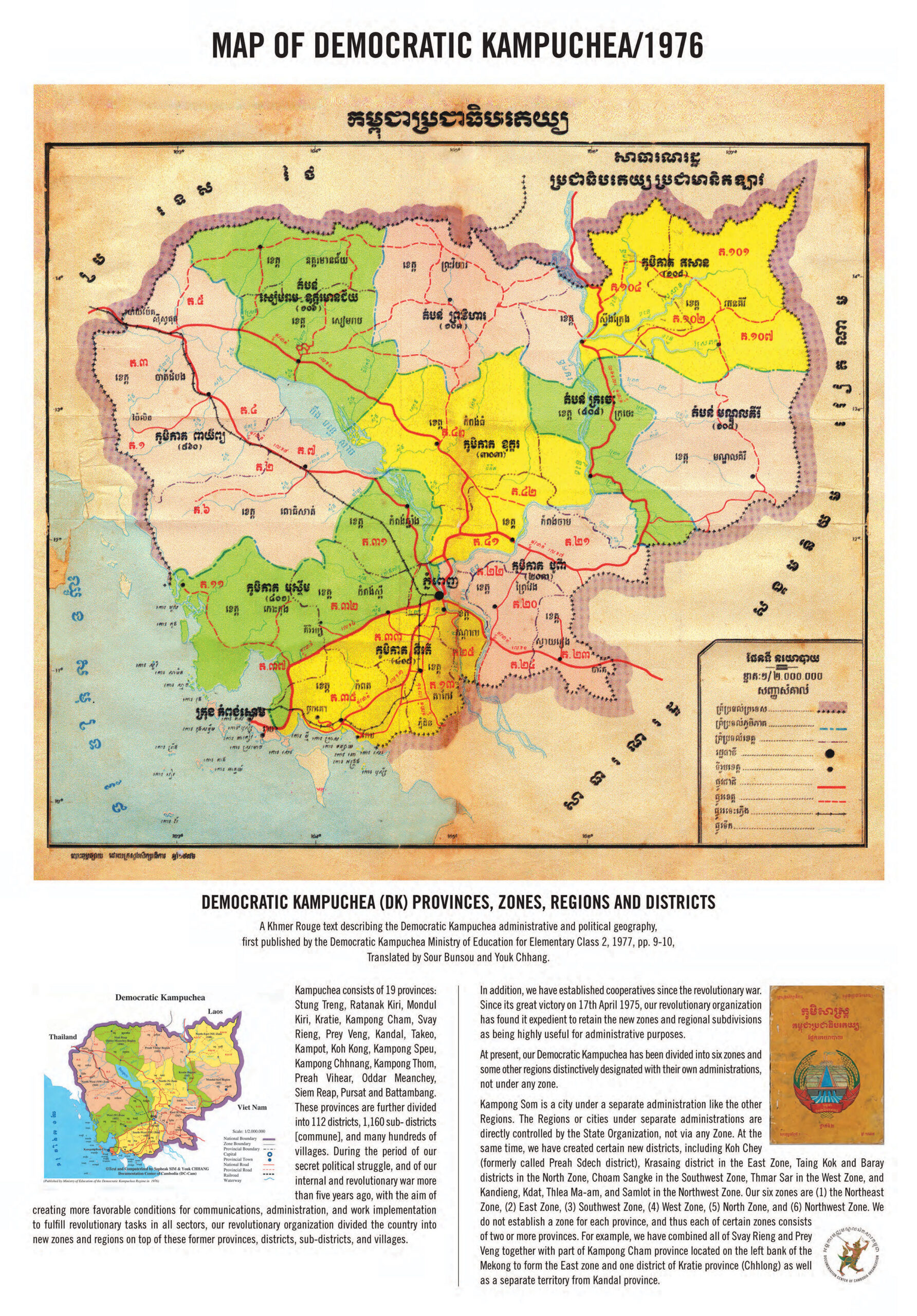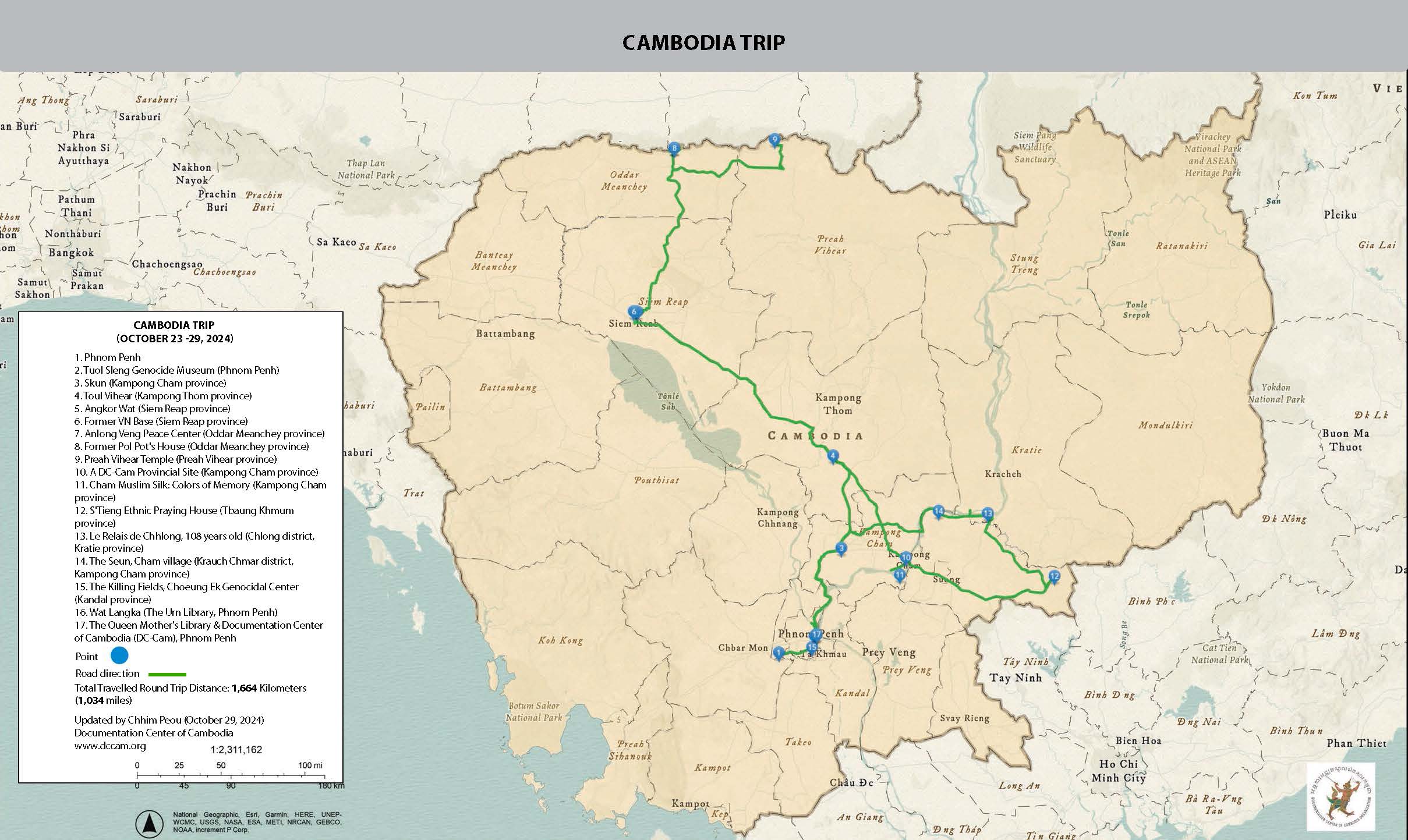Cambodia’s Killing Fields The Documentation Center of Cambodia (DC-Cam) uses global satellite position mapping combined with fieldwork to document mass graves nationwide. To date, it has identified over 390 genocide sites containing more than 19,000 mass graves (these are defined as any pit containing 4 or more bodies, although some graves hold over 1,000) dating from the Khmer Rouge regime (1975-1979). The Center has documented 197 prisons from Democratic Kampuchea and 81 genocide memorials. (Data was collected by Pheng Pong-Rasy and his team).
Forensics - Skulls
The bones cannot find peace until the truth they hold in themselves has been revealed – Youk Chhang
Based on existing mapping data, a team of three North American research and forensics experts and DC-Cam’s mapping team conducted a detailed reconnaissance of mass graves and memorials in Cambodia to identify sites for a full-scale forensic exhumation. They also excavated and preserved a representative sample of human skeletal remains in and around Phnom Penh (Tuol Sleng, Cheung Ek) and several provinces (Kandal, Takeo, Kampong Cham, Kampong Speu, Kampong Chhnang and Prey Veng). This work was conducted to shed light on the ways in which individuals were killed or otherwise abused during the Democratic Kampuchea regime.
One of the North American experts hired for the project (Dr. Michael Pollenen, FRCPC medical director and forensic pathologist of the Office of the Chief Coroner, Ontario, and associate professor of pathology, University of Toronto) was to complete a monograph on forensic findings and crimes against humanity in Cambodia. We have now closed this project, but hope that Dr. Pollenen will eventually produce the promised report. (To view the interim reports, click here.) In 2004, we mounted a forensic exhibition of human skeletal remains at the Tuol Sleng Museum and produced a project report on undisturbed graves in two Cambodian villages. In 2006, we shared our forensic experience which included the use of GPS, identifying mass graves and interviewing relevant informants in the field with twelve local police officers.
The Skulls
The ten skulls photographed for this exhibit come from the Tuol Sleng Genocide Museum. They were originally excavated from Choeung Ek (the “killing fields” south of Phnom Penh where Tuol Sleng prisoners were executed) and other parts of Cambodia. This exhibit seeks to demonstrate the value of forensic evidence in documenting the Khmer Rouge’s crimes against humanity. It is also intended to educate the public about the types of information that can be scientifically gathered from victims’ remains in order to prove and record evidence of murder/genocide.
Forensic Evidence
Forensic teams from the Documentation Center of Cambodia (DC-Cam) provided a large number of skulls to a team of Canadian
forensic specialists. The specialists chose ten for analysis. The skulls were selected based on their condition, level of preservation, and wound types; they were not selected randomly. Thus, one cannot infer that because one of the ten skulls is from a female that 10% of the Khmer Rouge’s victims were women, or that because four of them exhibit gunshot wounds that 40% of the victims were shot.
The specialists found three types of trauma to the skulls, which caused or contributed to the death of each individual:Blunt-force trauma (from such implements as a gun butt, hammer, mallet, or log): 2 skullsSharp-force trauma (from a cutting implement such as a machete, knife, hoe, ax, or hatchet): 4 skullsGunshot wounds: 4 skulls.
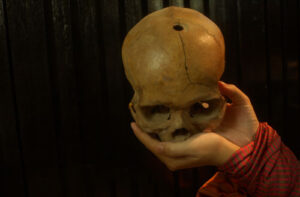
1) Cranium of a man, 25 to 45 years old.
Gunshot wound of entrance in the left frontal convexity with the bullet passing into the brain from right to left and downward on a 45-degree angle (as indicated by the “keyhole” effect). [Catalogue No. TSL13, 2A50700]
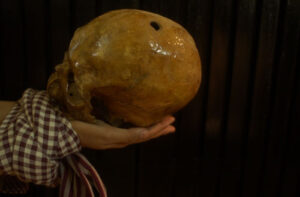
2) Cranium of a man, 30 to 55 years old.
Gunshot wound of entrance in the superior-posterior frontal convexity (top of the head) with the bullet passing left to right and downwards into the brain and exiting the skull in the right temple. [Catalogue No. TSL17, 2A50699]
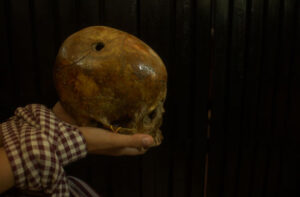
3) Cranium of a man, 20 to 40 years old.
Gunshot wound of right anterior-parietal convexity (right side of the top of the head) with the bullet passing downward into the skull through the brain and exit to the left of the foramen magnum (base of the neck where the spinal cord emerges from brain). [Catalogue No. TSL2, 2A50694]
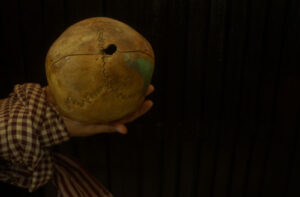
4) Cranium of a man, 20 to 40 years old.
Gunshot wound of right superior parietal convexity (top of the head) with the bullet passing downward into the skull through the brain and exit to the left of the foramen magnum (base of the neck where the spinal cord emerges from brain). [Catalogue No. TSL15, 2A50695]
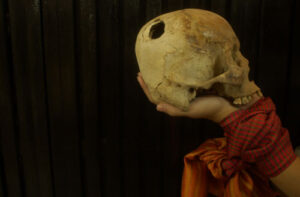
5) Cranium of a man, 30 to 50 years old.
Blunt impact trauma of right mid-parietal convexity (right side of head) with a depressed “punched out” skull fracture. In addition, there are other skull fractures related to separate blunt impact sites on the back of the head on the left side and the left temple. [Catalogue No. TSL 1, 2A50720]
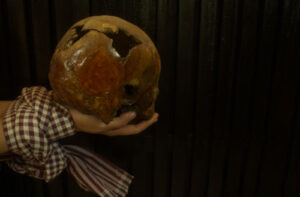
6) Cranium of a man, 30 to 50 years old.
Multiple blunt impact sites with a complex system of skull fractures. [Catalogue No. TSL14, 2A50701]
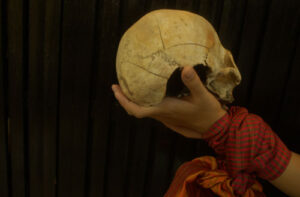
7) Cranium of a man, 25 to 45 years old.
Complex system of radiating skull fractures due to an impact in the right posterior-lateral cranium near the mastoid process (right side of the back of the head). [Catalogue No. TSL6, 2A50696]
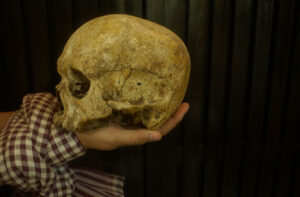
8) Cranium of a man, 25 to 45 years old.
Deeply incised wound (cut), or superficial chopping/hacking wound crossing the left lambdoid suture (left side of the back of the head). [Catalogue No. TSL16, 2A50706]
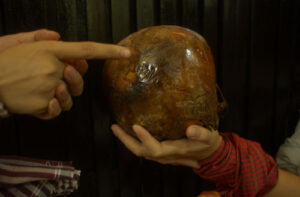
9) Cranium of a man, 20 to 40 years old.
Two deeply incised wounds (cuts), or superficial chopping/hacking wounds superior to the right lambdoid suture (right side of the back of the head). [TSL3, 2A50707]
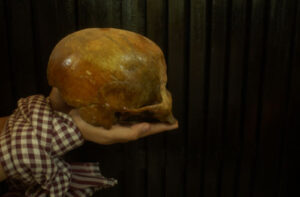
10) Cranium of a woman, 35 to 50 years old.
Chopping/hacking wound on the anterior portion of the right parietal convexity (right side of the top of the head). [TSL11, 2A50709]
